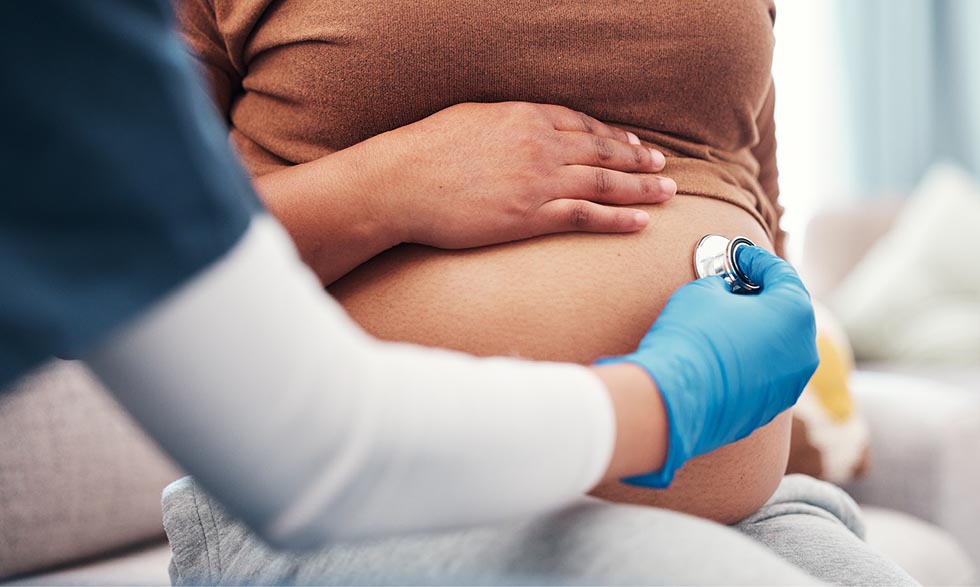
Last updated on July 19th, 2024 at 04:46 pm
More and more people each year are dying from complications related to pregnancy and delivery. In the United States, deaths from pregnancy, during delivery, or postpartum rose from 17.4 (per 100,000 live births) in January 2019 to 20.9 in January 2023. What’s even more alarming is that most of these deaths could have been prevented.
Infections and sepsis are the second-biggest cause of maternal deaths of maternal deaths in the United States. Sepsis is life-threatening and can happen to anyone, but pregnant people and infants are among the most likely to get it. Sepsis is the body’s extreme response to an infection someone already has. This infection triggers a chain reaction in their body. It can cause symptoms such as rapid heart rate, extreme pain, and feeling confused or disoriented.
Maternal sepsis happens during pregnancy or after delivery. Your chances of developing maternal sepsis are higher if you have an infection from:
- Cesarean delivery (also known as a c-section) wounds
- Pregnancy loss or abortion
- Respiratory (affecting the lungs) illness
- Meningitis (swelling around the brain and spinal cord)
- Postpartum hemorrhage (excessive bleeding)
- UTIs (urinary tract infections)
- Endometritis
Neonatal sepsis is a blood infection in an infant younger than 90 days old. Group B streptococcus (GBS) and herpes simplex virus (HSV) are common causes of neonatal sepsis.
The good news is that there are ways to lower the risk of developing maternal and neonatal sepsis, including:
- Preventing and treating infections during pregnancy
- Getting screened for GBS and HSV during pregnancy
- Taking antibiotics if you are pregnant and have GBS or chorioamnionitis (an infection of the amniotic fluid) or have given birth to a baby with sepsis caused by bacteria
- Delivering within 12 to 24 hours of your water breaking (when the membranes of the amniotic sac rupture). A cesarean delivery should happen with 6 hours of your water breaking.
- Giving birth in a clean place
NIH supports research around the world that seeks to prevent maternal deaths from sepsis.
Better screening for sepsis during pregnancy
Screening for maternal sepsis can be challenging. Pregnancy-related changes, such as a faster heart rate, can mask signs of sepsis. Researchers looked at five screening tools that health care providers commonly use to check for maternal sepsis. Two of these tools were “pregnancy-adjusted.” That means they consider specific changes that occur in the body during pregnancy. The other three tools were designed for sepsis screening in general.
Researchers found that screenings done between 20 weeks (about five months) of pregnancy and three days after delivery were more accurate when the provider used a pregnancy-adjusted tool. Screenings done outside that timeframe should be done with the tools that are not pregnancy-adjusted.
The researchers recommend patients who screen positive for sepsis get follow-up health evaluations.

It’s important that pregnant patients and their health care providers screen for signs of sepsis before and after delivery.
Single-dose antibiotic reduces risk of sepsis after delivery
A study called A-PLUS tested whether giving the antibiotic azithromycin to women who delivered babies vaginally could help reduce their risk of sepsis.
Over two years, researchers studied more than 29,000 pregnant women living in low- and middle-income countries. These countries struggled with overcrowded health care facilities and fewer skilled birth attendants. They also had limited access to water and sanitation. These factors all increase the risk of sepsis and pregnancy-related death.
Women in the trial were randomly given either a single dose of azithromycin or a placebo during labor. Those who took the medicine were less likely to develop sepsis or die within six weeks of giving birth than those who got a placebo. They were also less likely to develop endometritis and need additional hospital visits.
